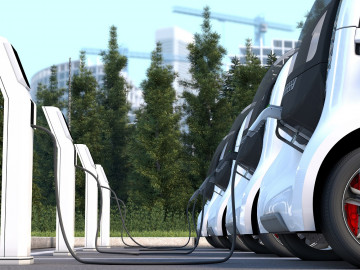For many corporations, it’s no longer a matter of if, but a matter of when they will need to get serious about carbon emission reduction.
With the impact of new regulations and a more robust global push to achieve net zero emissions by 2050, there is no better time than now to begin thinking about your organization’s low-carbon transition action plan.
Choosing decarbonization tactics that are practical and attainable for your organization’s function and size is an important step, but it is also important to consider when and how to implement these tactics – or when not to.
We’ll take a close look at six of the top decarbonization tactics so you can begin this process informed.
6 Decarbonization Tactics for Today’s Businesses
Many organizations falter in their pursuit of decarbonizing their business by not developing a coherent strategy of what decarbonization tactics to pursue, as well as when and how to pull the levers on these tactics.
Failing to understand the full scope of your organizational needs may result in choosing the strategy that sounds the most impressive, or the least expensive, rather than the one that’s the right fit for your business, resulting in unnecessary time, money, and resources being spent.
Additionally, pulling the lever on every strategy at once is also an unwise decision. It takes careful consideration of a site's or asset’s specific situation to decide when and how to implement these tactics. A well-thought-out low-carbon transition plan will ease your transition to a low-carbon economy of the future.
1. Grid Greening
The carbon emissions emitted to produce electricity that powers your facilities are counted as part of your organization’s carbon footprint. Different utilities and grids have different emission rates depending on the sources that generate the electricity. As more renewable energy is brought onto the grid, the emissions associated with your purchased electricity will begin to decrease, but it can be difficult to predict when and how much this will decrease.
Though your organization does not have control over the levers of grid greening, it is still important to consider and monitor throughout your decarbonization journey.
2. On-site Solar
With governments around the world investing in and offering incentives for solar installations, conducting a solar screening of your properties is a wise investment.
A solar screening will determine if your location has potential for installing on-site solar. There are several areas where solar can be installed, but common areas are large open spaces near your site, over parking lots, and on rooftops – especially large rooftops with little or no equipment on top. It is also important to consider the ownership models, owned or part of a power purchase agreement (PPA), as well as incentives and local policies, such as net metering.
3. Heat Pumps
Around the globe, nearly half of all energy use in buildings is related to space heating, with most of the heating done by burning fuels which has direct carbon emissions. The most common way to decarbonize space heating is to switch to heat pumps, which use electricity instead of fuels.
As the adoption of heat pumps accelerates and electrical grids continue to become less carbon intensive, electric heating will become a more affordable and lower carbon option. Additionally, pairing a switch to heat pumps with renewable energy procurement can quickly and economically decarbonize your heating.
An analysis of your site will help determine if a heat pump system is a good fit. In some instances, they can be installed as a secondary system alongside existing natural gas lines.
4. Fleet Management
Most company fleets today use gasoline and diesel as their main power source which can represent a significant proportion of a company’s emissions profile.
There are several ways that a company can lower its fleet emissions, including:
- Optimization: Using younger vehicles, predictive maintenance, reducing idle time, and right-on-time delivery are all examples of ways to reduce fuel use and emissions without major technology changes.
- Electrification: As the global push to electric vehicles continues to accelerate, more vehicle fleets will be comprised of hybrids and all-electric vehicles, especially passenger vehicles. Electric freight vehicles are quickly pushing into the space. Though not all types are available today, that has not stopped companies from planning for their integration in the future.
- Alternative Fuels: There are several types of fuel switching that can be undertaken to reduce or eliminate fleet emissions such as biodiesel, renewable natural gas, and hydrogen. These technologies are currently limited in their availability and use, but some, such as hydrogen, may continue to make significant advances for particular uses.
5. Facility Optimization
Facility optimization is the process of conducting assessments of a company’s sites in order to find opportunities for improvement, whether it is in energy, water, waste, or any other resource. There is opportunity for meaningful reductions at most facilities and can also have other added benefits such as operational improvements or identifying health and safety risks.
It’s important to consider which site locations to focus facility optimization efforts on and how to apply those learnings to other sites. Considering each site for its total resource use, spend, and emissions (don’t forget future grid greening) can help determine which sites to focus on first. There may also be specific considerations for some sites, such as those that have data centers, or sites with low occupancy which could benefit from a smaller footprint or consolidation with another site. For more information on facility optimization, check out Antea Group’s Facility Optimization service line to get your questions answered.
6. Environmental Financial Instruments (EFIs)
Environmental Financial Instruments (EFIs) refer to a broad suite of financial mechanisms to purchase attributes that reduce your site’s carbon footprint.
- Carbon Offsets: A carbon offset is the avoidance or sequestration of greenhouse gases outside of the reporting company’s operations. Offsets can be bought by your company in order to compensate for your operational emissions. Carbon offsets can be purchased from different marketplaces which provide information on the projects such as monitoring, verification, project description, additionality, leakage, etc. The justification for offsets is that emission-reducing projects would not occur without the financing made by selling them on the market. When and how offsets should be used by your organization should be considered carefully.
- Renewable Electricity Certificates (RECs): RECs are a market-based solution that allows companies to purchase the attribute of renewable energy generation and claim its environmental benefits. Outside of the United States, these clean energy attributes are called International Renewable Electricity Certificates (I-RECs) or Guarantees of Origin (GoOs).
- Green Tariffs: Green tariffs are programs that electricity customers can sometimes opt-in to in order to procure renewable electricity and claim their environmental benefits. Instead of being bought in an open market like RECs or offsets, these are purchased directly from your electricity utility.
- Virtual Power Purchase Agreements (VPPAs): VPPAs are a series of contracts between a customer, a utility, the electrical grid, and the owner of a renewable electricity project which allows the customer to procure renewable electricity from a renewable energy project without having the project on-site. VPPAs typically require customers who are purchasing large amounts of electricity (> 100,000 MWhs) in the US.
Get Started on Your Low-Carbon Transition Plan
Before determining which decarbonization strategy will work best for your organization, it’s important to understand your current carbon emissions by conducting a baseline greenhouse gas emissions inventory.
Charlie Quann, Climate Change Advisory Lead at Antea Group USA, shares why this is an attainable first step to encourage organizational leadership to invest in a low-carbon future: “Leadership sometimes thinks of sustainability and decarbonization as a cost and only a cost.”
A baseline greenhouse gas inventory builds context around where carbon – and the money – is being wasted. Charlie continues, “Helping to, at least at a high level, reframe that narrative to show that there are real tangible returns on investment, that this actually makes good business sense, that's really a starting point for this.”
Learn how to get started on the path to your own low-carbon strategy with Antea Group.
Want more news and insights like this?
Sign up for our monthly e-newsletter, The New Leaf. Our goal is to keep you updated, educated, and even a bit entertained as it relates to all things EHS and sustainability.
Have any questions?
Contact us to discuss your environment, health, safety, and sustainability needs today.






